One of the most daunting tasks in building or renovating your kitchen is determining the best types of kitchen sinks for your space. It is necessary to get the best type of sink since it is the busiest spot in the kitchen. In addition, a kitchen sink is a crucial focal point and demonstrates the tone of your kitchen.
In this write-up, we will have a look at various types of kitchen sinks as well as their pros and cons. But before that, let’s first understand what a kitchen sink is.
What is a sink?
Image Source: homestratosphere.com
A sink is a bowl-shaped plumbing appliance that is used for dishwashing, handwashing, and other tasks. Sinks have faucets or taps that supply hot and cold water. Others may also have a spray function for fast rinsing.
In addition, they have a drain to collect spent water, which can include an overflow deterrence system, a strainer, and a shutoff device. Sinks can also have a built-in soap dispenser. Most sinks, particularly in kitchens, are positioned within or next to a countertop.
Types of Sinks
The kitchen sinks are available in various styles depending on the basin configuration, materials utilized, mounting style, and appearance. With that in mind, let us focus on the different sinks you can purchase.
Kitchen Sinks Based on Their Installation
1. Drop-in Kitchen Sinks
The drop-in sink, a top-mount or self-rimming sink, remains the most popular kitchen sink you install from above. You cut a hole into the countertop, and you insert your sink from above. The weight of this sink is supported by the rim, hence requiring little support. Using silicone, you caulk the sink’s rim to the countertop.
Pros:
Cons:
2. Undermount Kitchen Sink
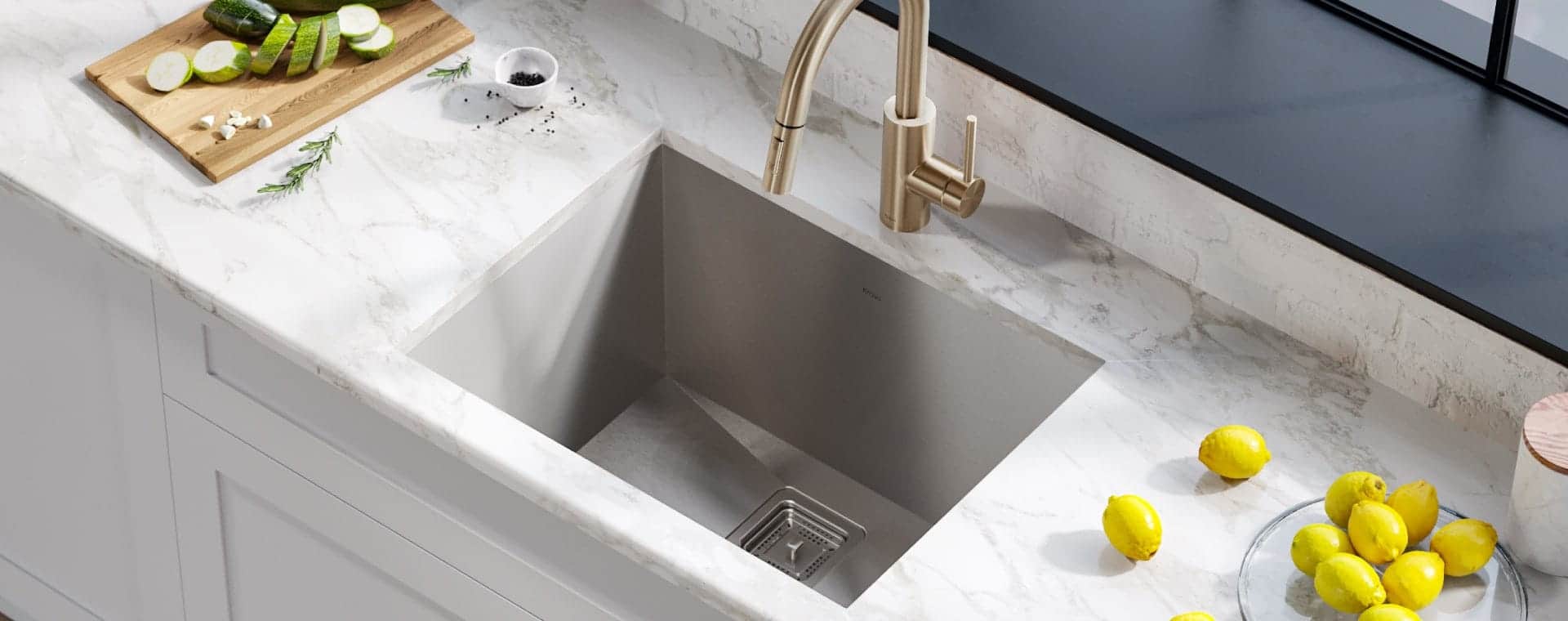
Image Source: kraususa.com
The Undermount sink is installed below the level of your counter. These sinks have that name because they sit under your counter so that the edge of the sink is under the level of the countertop.
The amazing bit is that the mounting system decreases visible interruptions. This makes it ideal for simple and modern kitchen styles. Additionally, the mounting style requires significant support underneath the counter. Therefore, this type works well with strong countertops like solid surfaces, natural stone, and quartz.
Pros:
Cons:
3. Integrated Kitchen Sink
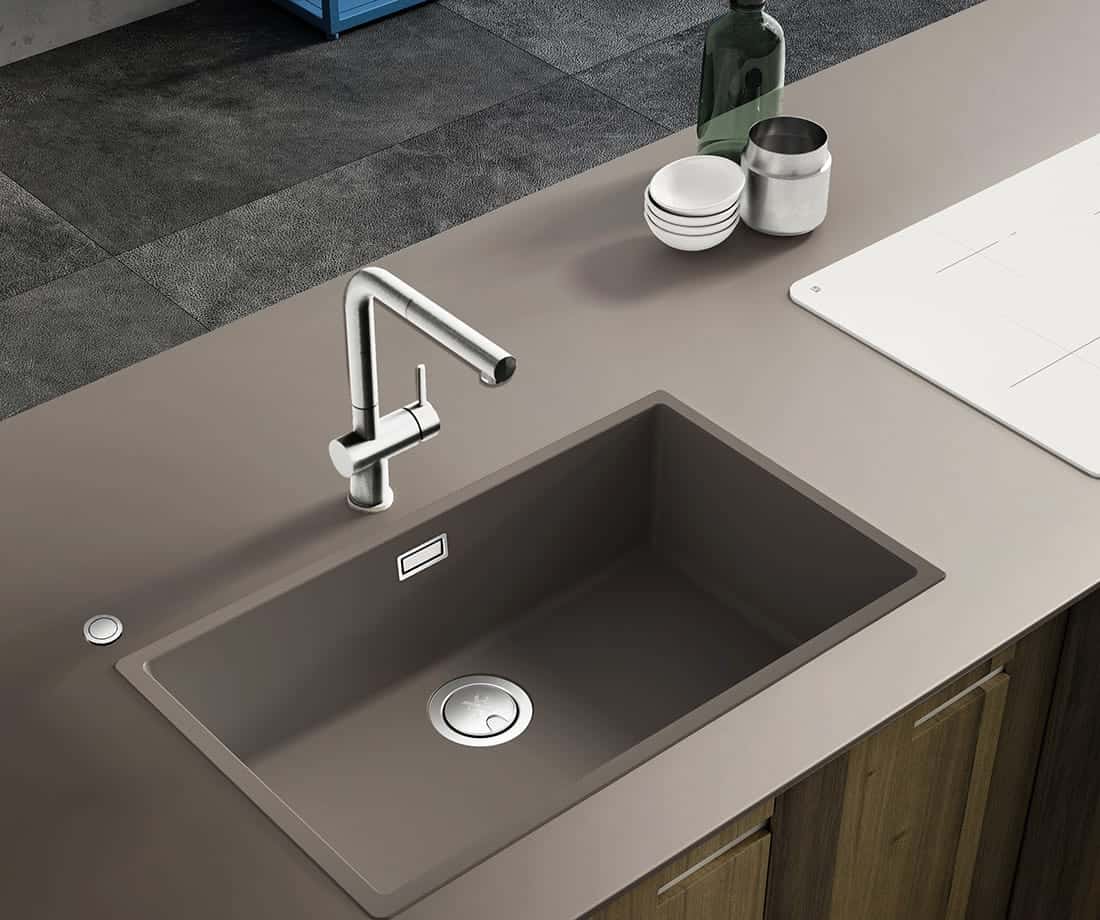
Image Source: fenixforinteriors.com
Integral or integrated kitchen sinks are mounted with the best countertops because they come as a single piece. More so, the sinks consist of similar material to the counter, and the fabricator fuses them in place.
Pros:
Cons:
4. Farmhouse Sink
Farmhouse kitchen sinks are also known as apron sinks because their walls remain the same as the walls of the countertops. The sink is a big single-basin kitchen sink differentiated by its front wall, which creates the sink's front and the counter front. More so, the sinks are incorporated into the counters.
However, sometimes, the apron sinks are installed in a country style or on top of a cabinet or free-standing table without counters surrounding them. Remember that the farmhouse sinks are large and need additional support under the cabinet.
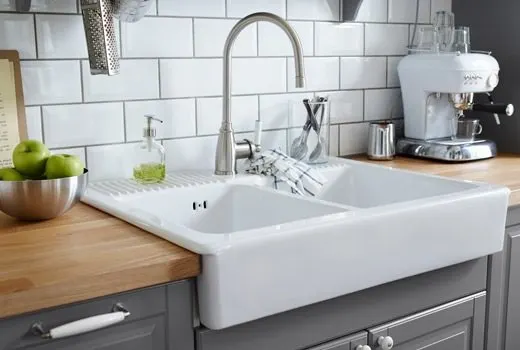
Image Source: homestratosphere.com
Pros:
Cons:
5. Vessel Kitchen Sink
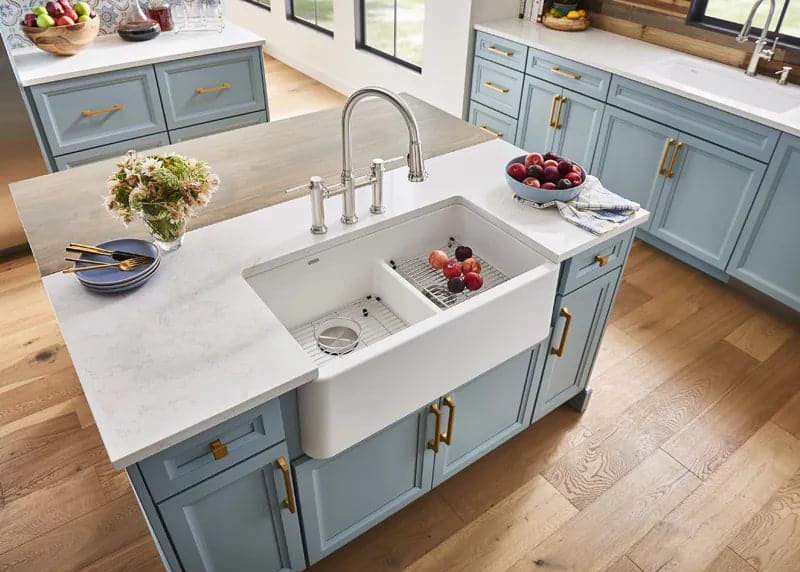
Image Source: vevano.com
The vessel sinks may be recessed or may sit at the top of the counter materials
Pros:
Cons:
Types of Sink by Basin/Bowl Configuration
Different types of kitchen sinks are available depending on their basic configuration. Here are the types of kitchen sinks based on their configuration
1. Single Bowl Sink
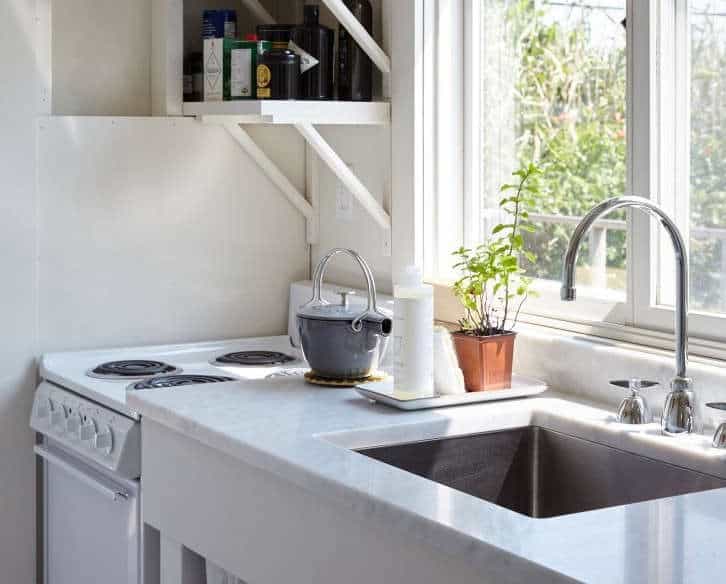
Image Source: remodelista.com
A single bowl sink is found in various sizes and styles. The single-basin sinks have a small or large basin and are without a divided basin. Therefore, it does not permit you to perform other kitchen tasks, such as drying or food prep.
Pros:
Cons:
2. Multiple Basin Kitchen Sinks
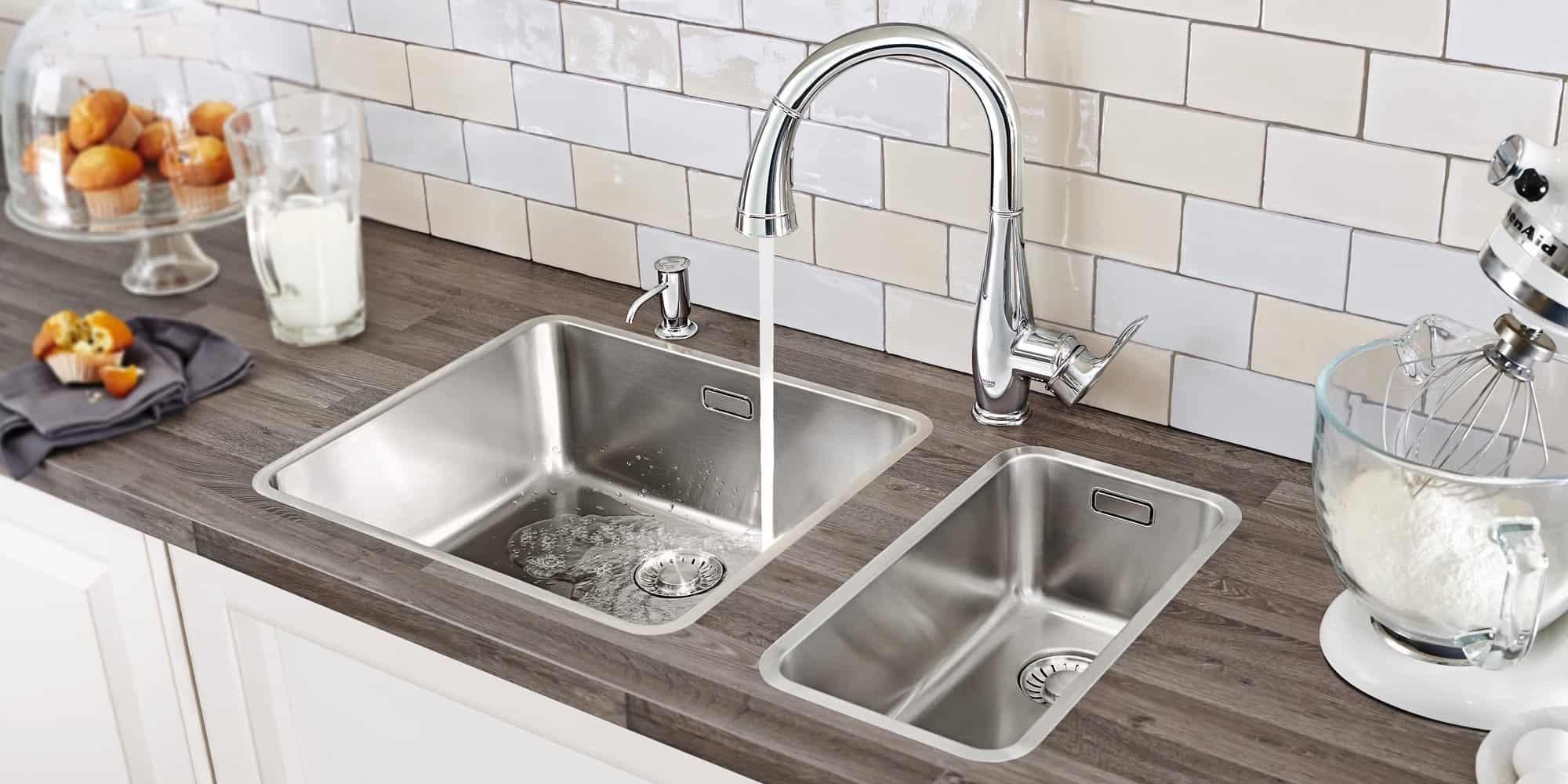
Image Source: hubspot.net
Multiple basin sinks come with multiple basins or bowls of distinct sizes. However, it requires kitchens with large countertop areas.
Pros:
Cons:
3. Double Basin ot Double Bowl Sink
The double bowl sinks are rectangular, with two basins or bowls separated by a partition. Moreover, a double sink permits you to multitask. You can prepare food and wash your dishes minimizing the effects of lost countertop space in your kitchen.
Pros:
Cons:
Types of Kitchen Sinks by Material
One of the most vital factors to consider when choosing a kitchen sink is the materials used to manufacture the sinks. Remember that the materials will impact the durability and costs of your kitchen sink and style. Let us discuss the various kitchen sinks depending on their materials
1. Quartz Kitchen Sink
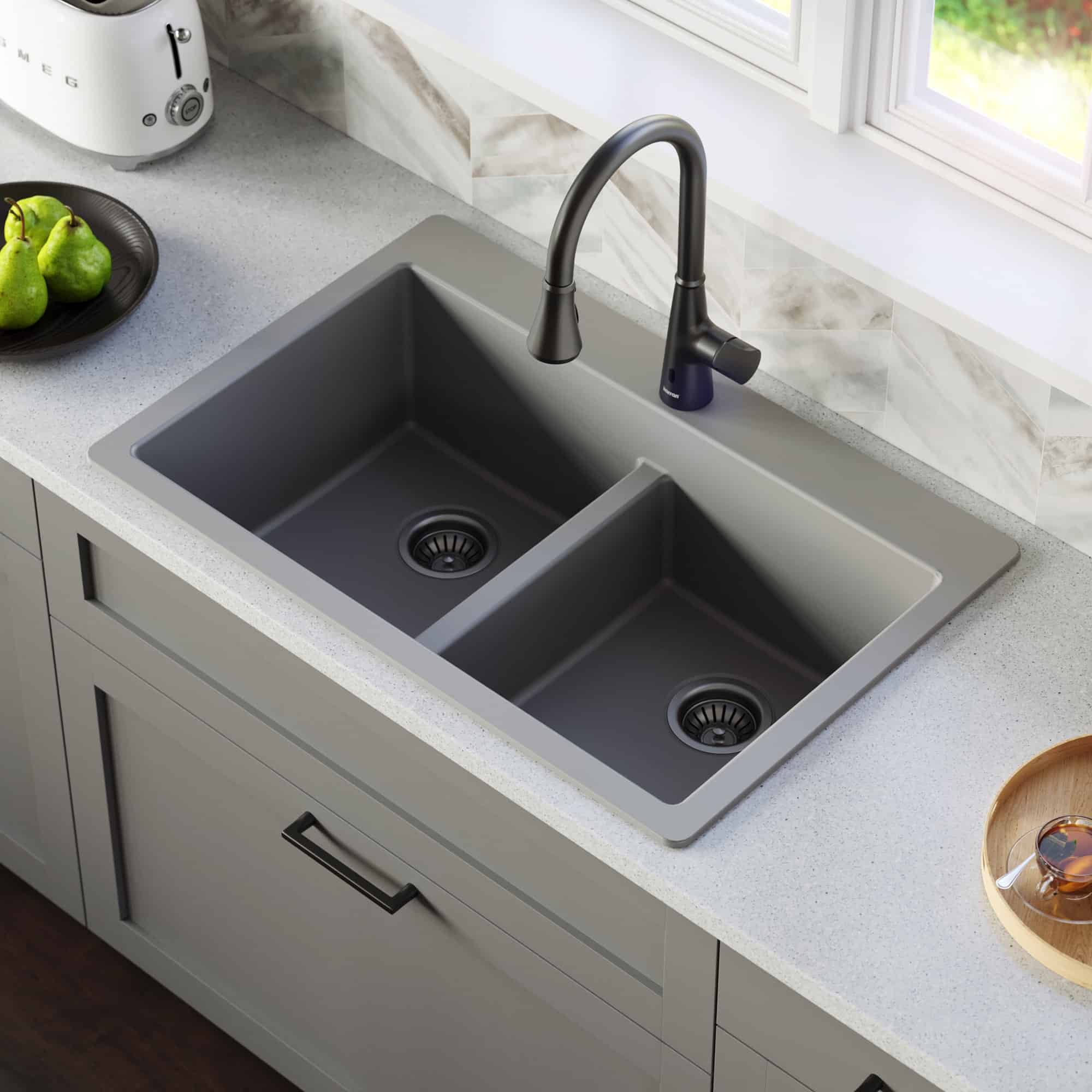
Image Source: lowes.com
Quartz kitchen sinks are developed from a resin and quartz mixture to produce a long-lasting, affordable, and beautiful sink.
Pros:
Cons:
2. Stainless Steel Kitchen Sink
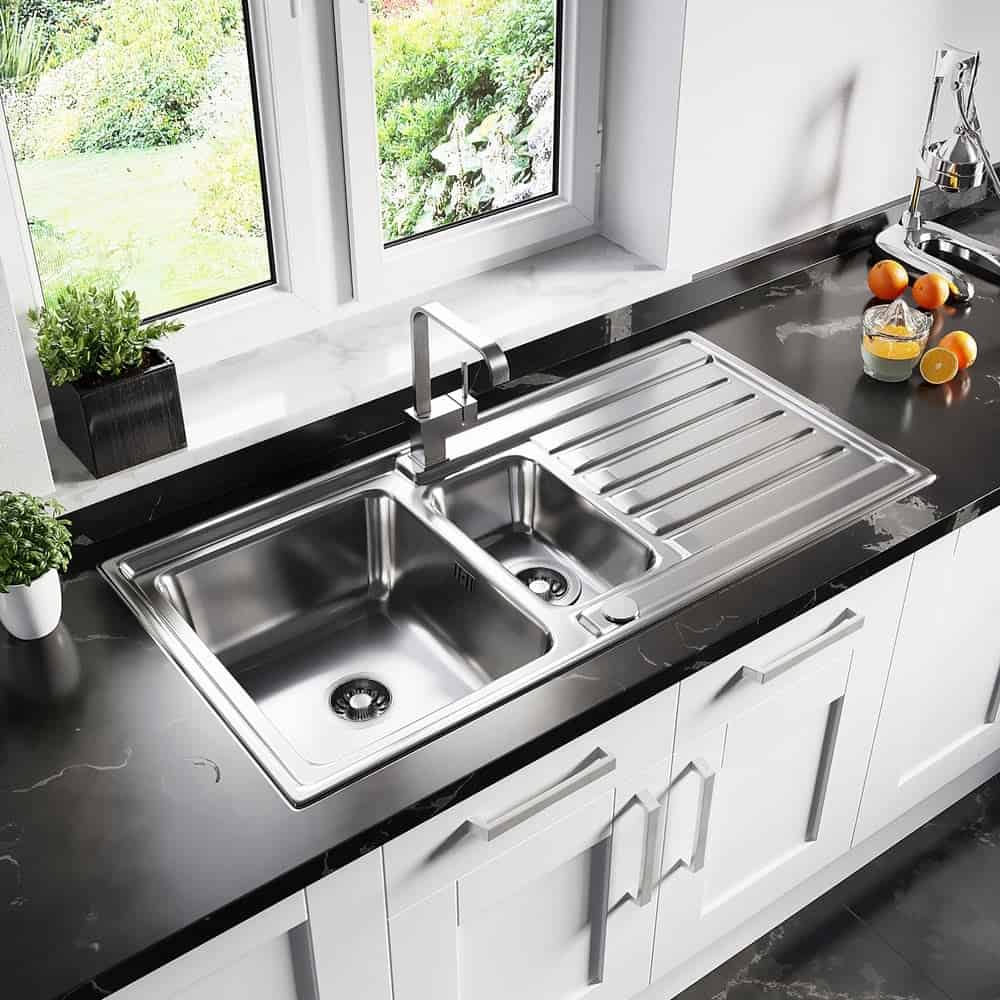
Image Source: tapsuk.com
Stainless steel kitchen sinks are one of the most popular sinks. One of the most common materials for kitchen sinks includes stainless steel. Keep in mind that it is appropriate to buy stainless steel of gauge 16 to 18-gauge due to its durability
Pros:
Cons:
3. Cast Iron Kitchen Sink
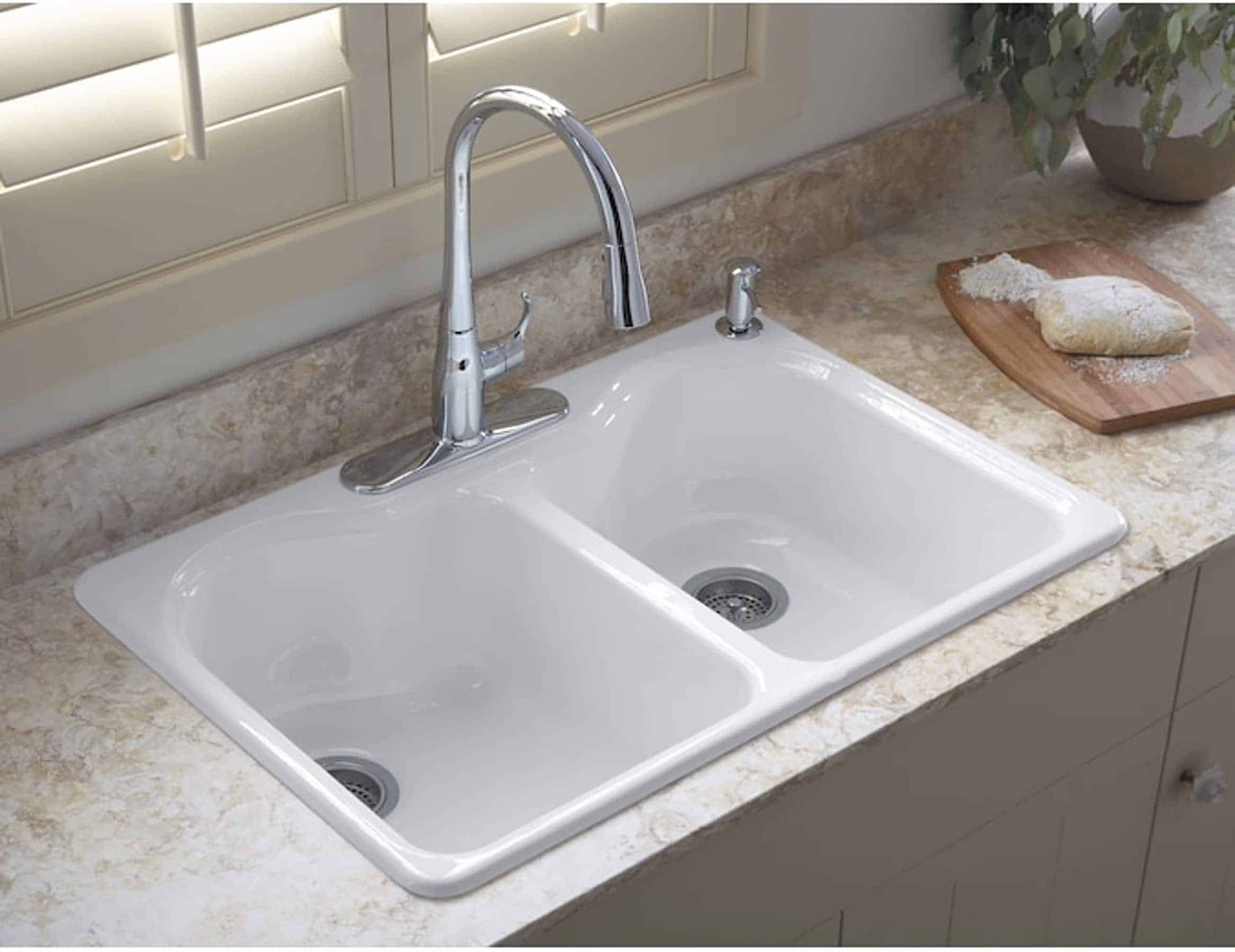
Image Source: lowes.com
The sink possesses a heavy cast iron base surrounded by an enamel coating. Do you desire a historical or ancient kitchen design? Then go for the Castrol iron kitchen style
Pros:
Cons:
4. Fireclay Sink
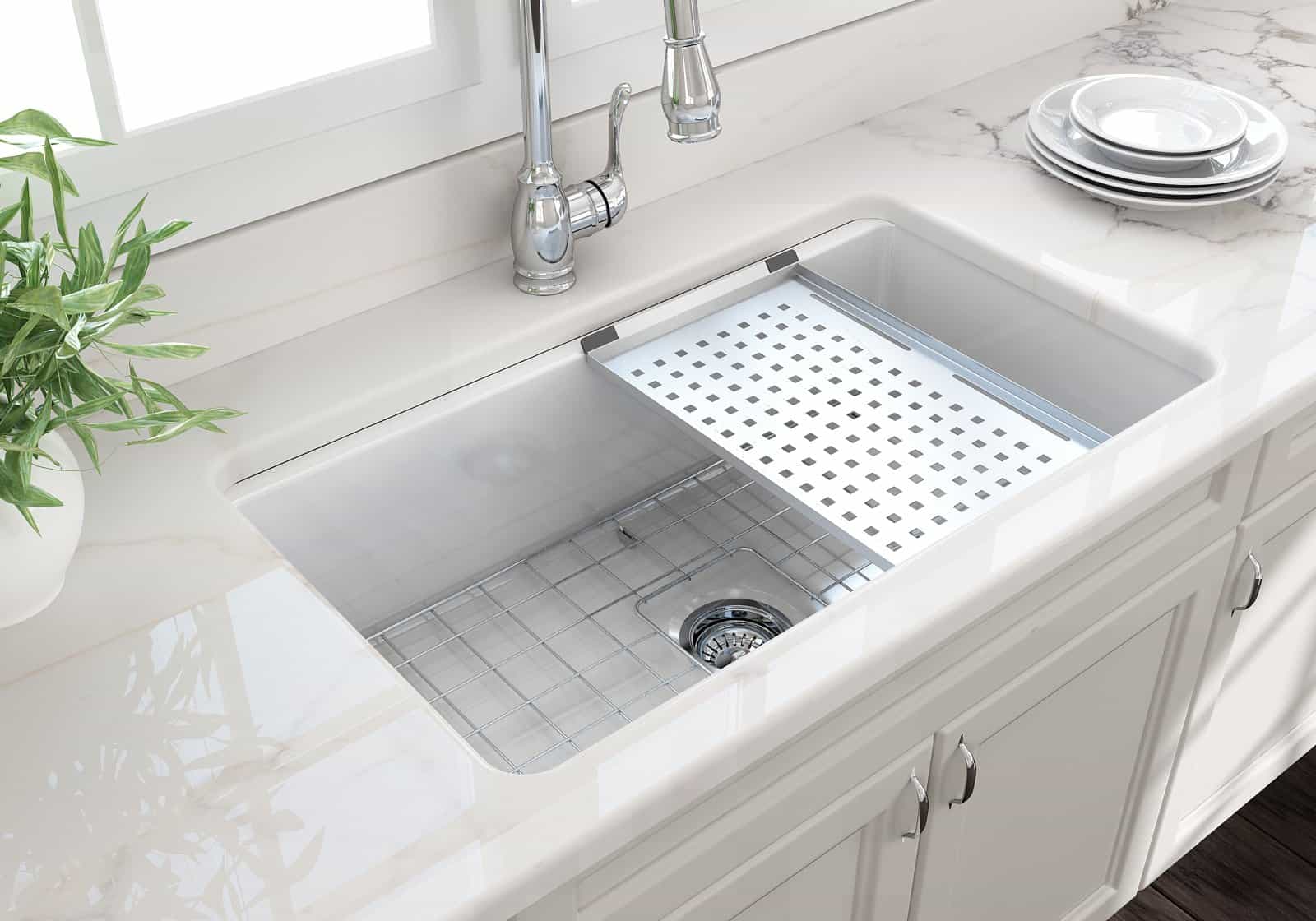
Image Source: bocchiusa.com
The manufacturers heat the clay at high temperatures to develop appealing fire clay sinks are developed by heating clay to a high degree to create an attractive sink. The materials are available for farmhouse sinks.
Pros:
Cons:
5. Acrylic Kitchen Sink
Acrylic sinks are made up of hard plastics. The fabricators mold the plastics into various designs to produce various attractive kitchen sinks
Pros:
Cons:
6. Granite Composite Sinks
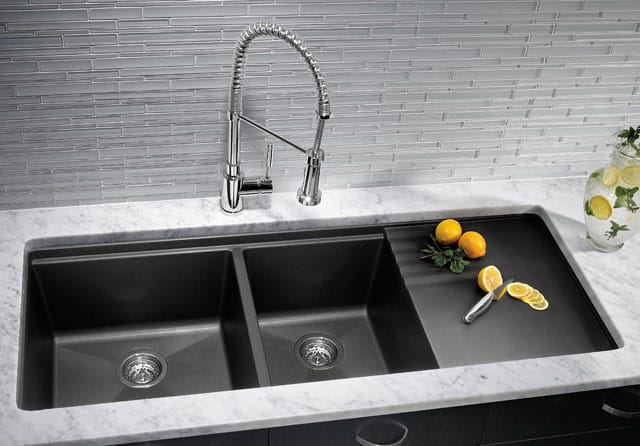
Image Source: st.hzcdn.com
Granite composite sinks contain granite particles mixed with resin to produce a long-lasting, high-quality, and less costly kitchen sink. Moreover, the composite granite sinks have a natural cemetery feel and appearance. Plus, you can easily perform minor repairs on the sinks.
Pros:
Cons:
7. Porcelain Kitchen Sink
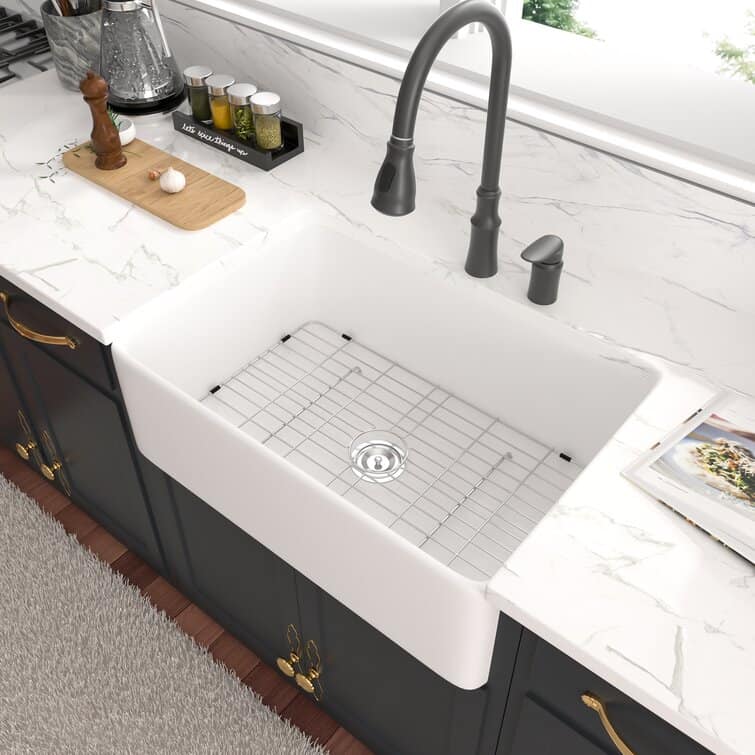
Image Source: wfcdn.com
Porcelain is considered one of the traditional materials to produce kitchen sinks. Moreover, the porcelain sinks are created by heating elements at very high temperatures to develop a non-porous and smooth framework. The durability is increased by buying a vitreous-coated sink.
Pros:
Cons:
8. Natural Stone Kitchen Sink
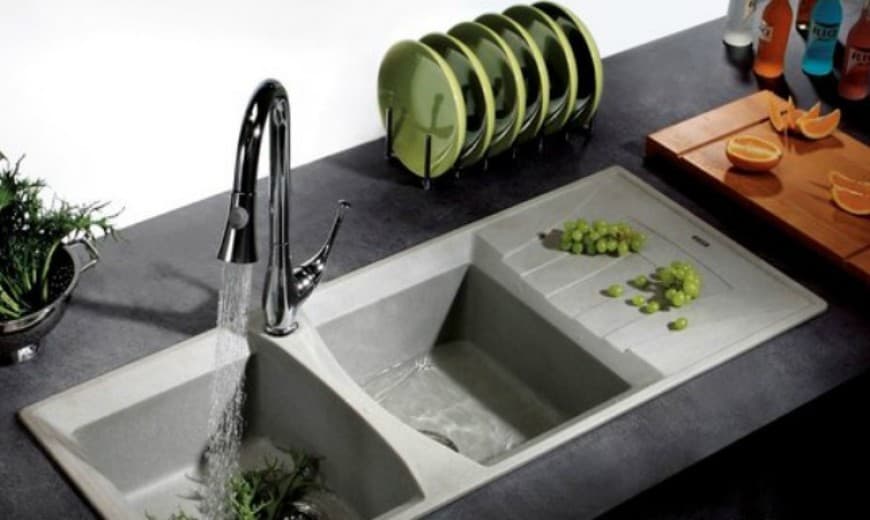
Image Source: decoist.com
The natural stone sinks possess a timeless look and attraction of a natural stone. The materials entail soapstone, granite stone, and marble.
Pros:
Cons:
Frequently Asked Questions
1. Which kitchen sinks are most popular?
The most common kitchen sinks you can find are drop-in sinks and porcelain sinks produced from stainless steel and enameled cast iron. You can install the sinks easily, and you will need to add extra structural support.
2. Are granite composite sinks better than stainless steel sinks?
Stainless steel kitchen sinks possess various advantages, such as being less costly and easy to maintain and install. On the other hand, granite composite kitchen sinks remain less prone to destruction, last longer, and make limited noise when washing utensils.
3. What is the depth of a kitchen sink?
A kitchen sink has a depth of approximately 8-10 inches. However, you choose the depth depending on your needs because a 10-inch depth permits you to prepare your food and wash bigger dishes. However, note that shallower sinks are simpler to reach and more convenient than deeper kitchen sinks
4. How many years can a kitchen sink last?
Depending on how you use the sink and the materials utilized to manufacture the sink, it can last for 15-30 years. The sink will last longer if you maintain it as required, and you will not need to replace it frequently.















